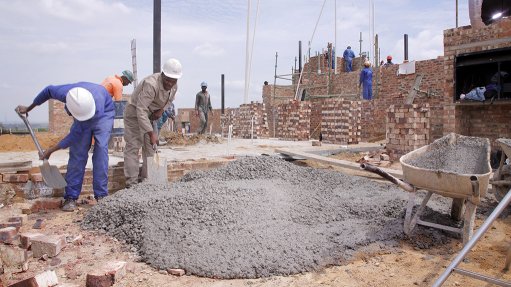Power system stability
Recently I was asked what I meant when I said that the proposed Karpowership generation at Saldanha Bay would make the power system unstable. For those who don’t know, there is a consortium that proposes to solve the problem of a shortage of power generation in South Africa using three ships moored in South African ports.
The ships will have power generators on board that will supply the South African electricity grid. Each ship will supply about 400 MW of power. The main grid constantly faces unforeseen events, such as faults on lines, loss of load and loss of generators. Every time one of these events occurs, there is a mismatch – either the load on the grid is greater than can be supplied by the generators or the generators are underloaded. One may say, oh well, overloaded generators, problem; underloaded generators, no problem. Not quite. All generators have governors, which will react if the load is added or removed to keep the generator output at a fixed frequency (in South Africa this is 50 Hz). The governors do react but not instantly. If the load is removed, they speed up; if the load is added, they slow down. Just like a motor car, there is an acceleration and deceleration time. However, when something trips, it happens instantly. Load is lost.
So, let us consider a Karpowership at Saldanha Bay generating 400 MW. In the Western Cape, there is the Koeberg power station (rated at 1 940 MW) and a power line connecting Cape Town to up-country generation. There is the Palmiet pump hydro storage system (400 MW) and the Steenbras pump hydro storage system (180 MW). If Koeberg is up and running and the pump storage systems are running, then the local generation is supplying about 2 500 MW. Add Karpowership (400 MW) and this becomes 2 900 MW, which is a large part of the load of the Western Cape. Of the generation systems, the Karpowership is the least reliable. If the Karpowership trips for any reason, it takes time for it to come back on line, since each of the 21 Karpowership generators will have to be synchronised one by one. At least 30 minutes. After the trip of the Karpowership, the up-country generation will have to supply the sudden additional 400 MW deficit left by the trip of the Karpowership. It can’t do this instantly – it will take about 20 minutes to ramp up. Thus, what will happen is that the power system voltage frequency will fall. It may fall by up to 4% which, if this results in a system frequency of 49 Hz or less, will cause the whole power system to be unstable.
Now, there are a lot of things that State-owned power utility Eskom can do about this. It can install control systems to shed load if the Karpowership’s 400 MW trips. It can start and run gas turbines at a low load to pick up the lost load in less than a minute. Eskom has some very smart people working for it and they are extremely adept at planning for contingencies such as the loss of power generation. But the big problem is that they will not be allowed to make any adjustments to the electrical systems of the Karpowership. Eskom will just have to assume that the power from the Karpowership may well be there one moment and then gone the next. This is quite a big matter to impose on Eskom. Effectively, one is saying, “Hey, at no notice, you may have a power swing of 10% – just keep the system going.”
I think to do this when you really have to is just a challenge. To do this because a private operator wants to connect to your grid so that the operator can make money and give you operating headaches is a no-no. The word is that Eskom doesn’t want the Karpowerships. The reasons put forward are the cost and length of the contract. I wonder if it isn’t just the hassle of accommodating them on the grid. I wouldn’t want it.
Comments
Announcements
What's On
Subscribe to improve your user experience...
Option 1 (equivalent of R125 a month):
Receive a weekly copy of Creamer Media's Engineering News & Mining Weekly magazine
(print copy for those in South Africa and e-magazine for those outside of South Africa)
Receive daily email newsletters
Access to full search results
Access archive of magazine back copies
Access to Projects in Progress
Access to ONE Research Report of your choice in PDF format
Option 2 (equivalent of R375 a month):
All benefits from Option 1
PLUS
Access to Creamer Media's Research Channel Africa for ALL Research Reports, in PDF format, on various industrial and mining sectors
including Electricity; Water; Energy Transition; Hydrogen; Roads, Rail and Ports; Coal; Gold; Platinum; Battery Metals; etc.
Already a subscriber?
Forgotten your password?
Receive weekly copy of Creamer Media's Engineering News & Mining Weekly magazine (print copy for those in South Africa and e-magazine for those outside of South Africa)
➕
Recieve daily email newsletters
➕
Access to full search results
➕
Access archive of magazine back copies
➕
Access to Projects in Progress
➕
Access to ONE Research Report of your choice in PDF format
RESEARCH CHANNEL AFRICA
R4500 (equivalent of R375 a month)
SUBSCRIBEAll benefits from Option 1
➕
Access to Creamer Media's Research Channel Africa for ALL Research Reports on various industrial and mining sectors, in PDF format, including on:
Electricity
➕
Water
➕
Energy Transition
➕
Hydrogen
➕
Roads, Rail and Ports
➕
Coal
➕
Gold
➕
Platinum
➕
Battery Metals
➕
etc.
Receive all benefits from Option 1 or Option 2 delivered to numerous people at your company
➕
Multiple User names and Passwords for simultaneous log-ins
➕
Intranet integration access to all in your organisation

















